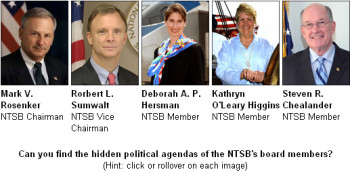
What’s wrong with this picture? Look closely. Notice the three Republicans and two Democrats?
The National Transprotation Safety Board, or NTSB, is charged with investigating accidents on the nation’s roadways and in its airspace. It is considered among the country’s most independent and objective agencies, relying on technical expertise and impartial methods to arrive at its conclusions upon which US safety regulations are largely built.
But a little known fact about the NTSB is that its very structure is built upon the party system. Its members are nominated by the president and then voted on by the Senate. By law, the NTSB membership can never be more that three-to-two in favor of one party – but still the split exists.
However, none of the local papers, including the Lexington Herald Leader and The Courier Journal, have acknowledged this divide in their coverage. The Herald-Leader, in an article titled “Who’ll Be Voting,” printed biographies of the board members but didn’t include party affiliations in the profiles. This was not just a failure of the Lexington journalists. The national press, including The New York Times and the Washington Post, missed it, too.
One year after the Comair Flight 5191 accident in Lexington, Kentucky, the NTSB investigation ended in a vote split directly down party lines. The Republican staffers argued that the control tower operation was not a factor in the crash. The Democratic ones said that it was. This is significant because the relationship between the air traffic controller’s union and the G.O.P. has been strained ever since 1981 when President Reagan sacked Professional Air Traffic Controllers Organization (PATCO) strikers.
By voting against including the understaffed control tower as a primary cause of the crash, Republican NTSB members turned Comair Flight 5191 into a story about the mistakes of two pilots, rather than a symbol of the systemic failures of the FAA. On the other hand, the Democratic members emphasized other causes that address the concerns of unions with whom Democrats have historically sympathized.
Is this just a coincidence? For the sake of the families of the victims and the safety of air travelers, the press needs to start paying attention to these issues.
Of Planes and Politics
To understand the politics of Comair Flight 5191, one has to know what happened on the day of the accident.
On August 27, 2006, a CRJ-100, a fifty seat passenger jet, attempted to take off on the wrong runway of the Blue Grass Airport in Lexington, Kentucky. The distance, however, was too short for the plane to lift off and the vessel crashed headlong into a tree, killing 47 passengers and two crew members. One of the pilots survived, but he suffered severe brain damage and could not comment on what happened.
These are the widely agreed upon facts of the case. But how the plane got onto the wrong runway in the first place is the source of great controversy.
The theory supported by the NTSB’s Republican majority places the blame entirely on the pilots. The recording showed that they violated the FAA’s “sterile cockpit” rule, which mandates that pilots do not engage in “non-pertinent conversation” during takeoff. NTSB Chairman Mark Rosenker argues that because they were distracted, they had not been “concentrating on the important task of operating the airplane in a safe manner.”
The version advanced by the NTSB’s Democratic members, however, cites other factors that may have contributed to the crash. The airport was under construction, but the pilots still had the old maps. There was a barricade on the normal taxiway to the correct runway, number 22, which had been open a week earlier, and the replacement taxiway was not on the outdated map they were given. It was pre-dawn flight, and Runway 26 was poorly lit. The pilots would have known about these irregularities in advance if they had received the Notices to Airmen (NOTAMs), but four of these documents were missing from their papers. The announcement was also missing from the Air Travel Information System (ATIS) broadcast.
In addition, the control tower was understaffed at the time of the accident, and the controller on duty failed to send a radio transmission of the NOTAMs, as is customary. The employee on duty was working on only two hours of sleep, and did not see that the plane was in the wrong location because he was doing a traffic count – a lower priority task that he had to complete before leaving. “If there were two workers in the tower,” said Howie Barte, a retired air traffic controller. “I can tell you that in all probability – better than 85 to 90 percent – the controller that was talking to the airplane would probably have been able to detect that this guy turned onto the wrong runway.”
But the 3-2 Republican-Democratic split vote may be more than coincidental. It may reveal the political fault lines that have emerged in the longstanding feud between the FAA and the National Air Traffic Controller Association (NATCA).
Since Reagan fired air traffic controllers en masse for striking in 1981, air traffic controllers have viewed Republican administrations with suspicion. In 2006 – on Labor Day no less – the FAA imposed a contract on the National Air Traffic Controllers’ Association (NATCA) that reduced wages, set longer hours, and enforced a “gender-appropriate” dress code to “restore public trust,” even though the employees work in windowless rooms and towers. “The conditions that exist now in the FAA are far, far worse than they were the day before the strike in 1981,” said Howie Barte in a telephone interview.
Barte, who sometimes contributes to a website called “FAA Follies,” says some of his colleagues have called for another strike. However, he thinks this is more bluster than an actual possibility. “The only way that can possibly happen is if Congress changed the law [and decriminalize strikes by government employees],” Barte argues. “I don’t see that happening in our lifetimes.”
Gail Dunham, an advocate for families of flight victims, has testified before the U.S. House Aviation Subcommittee and can say with authority that air traffic control has become a “hot button issue” for members of Congress. The fact that no public hearing was held for Comair 5191, Dunham says, reveals that political motivations were at play behind the scenes. “Historically, domestic and commercial aviation disasters have had a public hearing,” she states, adding that the decision to forego them is usually tied to outside influence. “The airline industry people will make up to 90% of the investigation team. So they are literally investigating themselves.”
In the past, books like Roger Cobb and David Primo’s The Plane Truth has examined how manufacturers will try to influence investigations in order to avoid accountability, but the public has rarely scrutinized how partisanship affects votes. However, it is well-known that NTSB is not entirely immunized from political pressures, and the RAND Corporation’s report “Safety in the Skies” acknowledges that a vote on the probable causes of a crash can be influenced by “Congress and/or the White House.”
In this politically charged atmosphere, NTSB members have even resorted to political maneuvers in order to air minority opinions. In a strange turn of events, Democratic Board Member Deborah Hersman leaked a concurring opinion to The Associated Press dissenting with the board’s findings. It argued that several “latent failures” led to the crash, not simply pilot error. According to the organization’s Department of Public Information, her remarks were supposed to be released weeks later with the full opinion of the board, and the representative did not know how AP obtained an early draft.
The other Democratic member, Kitty Higgins, announced to the Lexington Herald-Leader that she will also be filing a concurring opinion in the future.
Ideally, an investigation of a plane crash should not be influenced by political motives, but too many signs indicate that this is happening in Lexington. So far, it just seems that most of the media is not noticing it. With justice for the victims, grievances of airline workers, and safety of air travelers at stake, the press cannot afford to avoid these issues any longer.

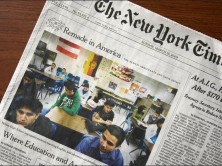
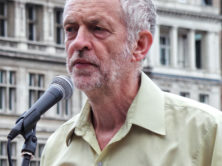

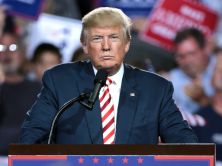

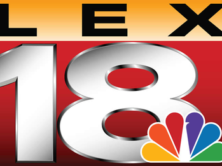
Comments Terms and Conditions